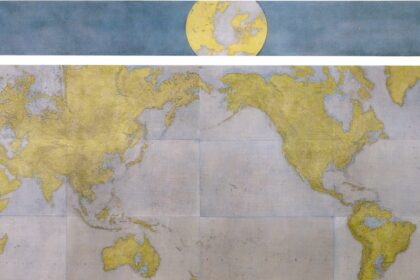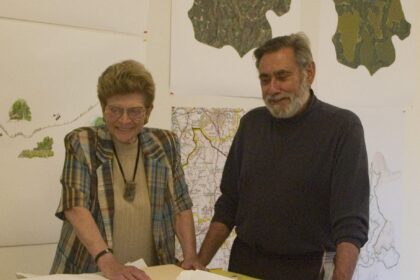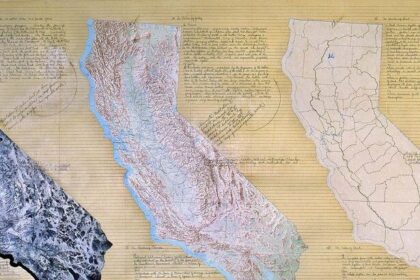Wicked Problems
David Familian
A wicked problem has innumerable causes, is tough to describe, and doesn’t have a right answer, as we will see in the next section. Environmental degradation, terrorism, and poverty—these are classic examples of wicked problems. They’re the opposite of hard but ordinary problems, which people can solve in a finite time period by applying standard techniques. Not only do conventional processes fail to tackle wicked problems, but they may exacerbate situations by generating undesirable consequences.[1]
As noted above, Horst W.J. Rittel and Melvin M. Webber, professors of design and urban planning at the University of California at Berkeley, coined the phrase “wicked problems” to describe various current global predicaments. There are many challenges to tackling to “wicked” problems, such as overarching social and political difficulties, and the fact that possible solutions often have unintended consequences. What I am concerned with in this paper, is that vexing global problems must be approached wholistically as complex systems, and solving them demands both extensive conversation and interdisciplinary collaboration.
The word “wicked” is commonly associated with fairy tales. One of the characteristics of fairy tales is that the protagonists go on a quest and make a choice that puts them in danger. Little Red Riding Hood engages the wolf, Hansel and Gretel are drawn to the gingerbread cake house of the witch, and Jack chooses to plant the bean that leads him to the giant. To illustrate this point about “wicked problems” we can turn to a contemporary fairy tale of sorts—Stephan Sondheim’s musical “Into the Woods.” A poetic mash-up of several different fairy tales, Sondheim combines “Little Red Riding Hood,” “Thumbelina,” “Rapunzel” and “Jack and the Beanstalk.” He deftly interweaves these characters within the narrative, each with their own desires and needs: the Baker and wife’s want to have a child, Jack must sell his cow, Cinderella wants to go to the ball, the witch wants to be beautiful, and Rapunzel wants to escape from the tower. Of course, all these wishes lead to the giant taking revenge on the killing of her partner, so if they did not work together, they would have all died.
Debuted in 1987 at the apex of the AIDS pandemic in the US, Sondheim’s work has been interpreted to be a parable about AIDS pandemic. After the release of the film version in 2014, several writers noted how the giant’s wife served as a metaphor for HIV/AIDS, killing good and bad characters indiscriminately and forcing the survivors to band together to stop the threat and move on, reflecting the devastation to many communities during the AIDS crisis. [2] Therefore, it becomes not just parable of the AIDS pandemic, but also a parable metaphor of a complex system: collaborating and using systems thinking to solve problems.
Of course, the term wicked permutes the whole story of “Into the Woods” but is not just isolated with the witch–– all the characters contribute to the wicked problem of survival. There is a scene towards the end where they try to unravel the complexity of their problems and try to blame each other for the predicament they’re in, but at some point survival becomes more important than who is to blame. We now need collaboration across a wider array of disciplines because the thicket of complexity of our world forces us to go “into the woods” where we need to rely on each other to solve our critical global problems.
Philosopher Bruno Latour provides a different perspective of the difficulty of complex systems: “The disorientation people feel regarding the planet and the fact that they can’t react quickly to a situation that everyone knows is catastrophic, is largely due to the fact that they continue to be in the world in the past, one where there are objects that have no agency and can be controllable by the calculation and science.”[3] As we will see systems have agency, they cannot be simplified into simple equations, they are dynamic. In trying to deal with the scale of climate change Latour asks us to look at our global dependencies. If a farmer in France needs soy from Brazil than he must be concerned with what is happening in Brazil. Latour observes that: “Politics is not about moving to a new level of generality, it’s about following the network of your dependencies and what you belong to, as far as these networks go. This is a rediscovery of political capability.”[4]
So how do we bring these critical problems down to scale? As Latour states, the focus on dependence is at the core of the problem, but these dependencies work both within our individual dependence and also in grasping the science of complex systems that inform the experiences at the human level. My intent in this paper is to uncover some basic definitions of complex systems and systems thinking that provide the tools to better understand the degrees of the “wicked problems” of the world we live in and the existential survival that we now must face. To further illustrate my points about complexity, collaboration and conversation within an art context, I will discuss two case studies by Helen Mayer Harrison and Newton Harrison.
I will now show the transition from what Latour defines as objects that can be controllable by calculation and science, to seeing the world that is less predictable. One goal of modern science was to remove the mystery of nature by attempting to predict both natural and human outcomes. After 500 years of discoveries by the 1800s this was within in reach, but towards end of the 19th century a few began to see this goal would fail.
When Newton and Gottfried Leibniz formalized calculus, it became the major tool of measuring the rate of change over time and could be applied to not just Newtonian mechanics, but also plant growth, populations, infections, etc. The first tool to measure the rate of change in linear dynamic systems that could interpolate the past and the future from the current position, it fueled the belief that we could predict all of nature. Newtonian mechanics was able to predict what came to be called a “clockwork universe.” The mathematician Pierre Simon Laplace saw the implication of this clockwork view for prediction: in 1814 he asserted that given Newton’s laws and the current position and velocity of every particle in the universe, it was possible, in principle, to predict everything for all time.”[5]
In Henri Bergson’s book Time and Free Will: An Essay on the Immediate Data of Consciousness, first published in 1889,[6] he pointed out the paradox of Laplace’s goals of ultimate predictability and free will. He noted that if Laplace is right, then we would lose a core attribute of the western civilization: our free will. He would go on to make a philosophical argument that ultimately argued that predictability was not possible.
In 1903 we see yet another challenge to the clockwork paradigm, hypothesized by Henri Poincare, a French mathematician, who started to speculate on reasons why perfect prediction might not be possible. A pioneer of modern dynamical systems theory and the notion of chaos, Poincare hypnotized that with some systems, if you got the decimal place wrong for the initial position or velocity, your calculation would eventually end up being way off. This could be the 10th decimal place, the hundredth, the thousandth, or however far out you want to go. So if such a small change in initial conditions could have such as large affect this would make prediction very difficult.[7]
The fact is that our human minds are not wired to see complex systems. We are very good at breaking down problems into parts and by putting those individual parts back together we can understand a semblance of the whole. But in complex systems the whole is greater than the sum of its parts, so therefore, an understanding of the parts will only get you so far. German cognitive psychologist Dietrich Dörner explored how complexity challenges our everyday thinking, which functions along “linear” lines as human cognition has the tendency to think in simple cause-effect patterns. He found out that the most frequent reaction is to either ignore complexity – or to mentally reduce it in order to cope with it. [8] Mentally reducing it is referring here to breaking the problem into parts but the problem with this is complex systems are larger than the sum of its parts. What Latour was proposing was not to simplify it, but tracing dependences to see the dynamic systems.
Frederic Vester summarized three root causes of the most common mistakes that we commit in dealing with complex systems. These are: 1) the reductionist and piece-meal way we employ when dealing with them, which makes us ignore their interconnectedness and dynamism; 2) the tendency to ignore feedback and focus on inappropriately chosen systems parameters; and 3) inappropriately short planning horizons that leave us unaware of time-delayed feedback.[9]
The Santa Fe Institute’s educational web site “Complexly Explorer” has many courses devoted to complex systems. On this site physicist Melanie Mitchell wrote an introduction in which she asked some major scientists in the field to define complex systems. Like the parable of “The Blind Men and the Elephant,” who each describe the animal entirely differently, their respective answers each highlight just one aspect of complex systems. When read together they do begin to encompass the salient qualities of complexity which are: feedback, information theory, chaos, self-organization, and emergent behavior. These definitions of complex systems are also complicated by the fact that new ideas are continually emerging. In the history of science writing down a simple equation could explain an aspect of nature, such as Newtonian mechanicians, but when it comes to complex systems such as global warming, the human genome or worldwide pandemics, this just is not possible. Additionally, complex systems have many interactive components, especially nonlinear interactions. This nonlinearity creates a system that is learning and producing emergent behavior. One of the main forces that generates the nonlinearity is the continuing feedback loops which can be positive or negative which creates a system that is constantly changing.
The change into systems thinking is a methodology for understand complex systems which necessitates a change of consciousness to expand the original goals of modern science to predict with certainty. American systems scientist Barry Richmond, who is credited with coining the term “systems thinking” in 1987, has written:
If one accepts the argument that the primary source of the growing intractability of our problems is a tightening of the links between the various physical and social subsystems that make up our reality, one will agree that system dynamics and systems thinking hold great promise as approaches for augmenting our solution-generation capacity. The systems thinkers’ forte is interdependence. Their specialty is understanding the dynamics generated by systems composed of closed-loop relations. Systems thinkers use diagraming languages to visually depict the feedback structures of these systems. They then use simulation to play out the associated dynamics.[10]
During the past year, my many conversations with the late Newton Harrison have centered around systems thinking and how to apply this to solve the problems of complex systems. In order for me to deeply understand the 50-year collaboration of Helen Mayer Harrison and Newton Harrison I needed to comprehend how they have looked at complex systems across many fields including science, business, psychology, governmental policy, etc. To implement systems thinking they needed to employ convergence science which brings scientists and others from related fields to the problem being investigated to collaborate on solving a particular problem. As we will see, their approach is to use a Socratic method of both questions and dialogue to engage with nature in the most empathic way possible. To demonstrate this methodology, I will discuss a collaboration from the 1990s that Helen and Newton worked on with a team of others, as well as Newton’s current work-in-progress, which sadly will be his final project.
In 1984 the Harrisons were asked to look at a development plan to add 600,000 homes in the center of The Netherlands. The original proposal was to place these homes in the “Green Heart” of Holland, a 800-square-kilometer farming area that also harbored wildlife and 35 villages. Their goal was to find an alterative solution to destroying this essential part of the Netherlands.[11] Initially, they were presented with ten different proposals from the Cultural Council in which they could not solve the problem of saving the Green Heart. The Harrison’s answer was to paraphrase Albert Einstein’s famous comment about problem solving as they stated: “We (the Cultural Council of South Holland) cannot solve problems with the same thinking was used to create them” and the artists vowed to find a new solution.
Using the principles of systems thinking, they assembled a team with sociologists, a landscape architect, an engineer and support from the Cultural Council. As the group began to work through the issues, they appointed one individual—the landscape architect—as the devil’s advocate. Over time Newton felt that his critiques were getting in the way of their progress, so he asked him to “stop critiquing and start creating.”[12] The landscape architect took the artists’ advice and made important contributions to the final solution. The conceptual breakthrough was to find where the urban continuum ended, and the ecological continuum began. Focusing on this eco-urban edge helped them to ultimately solve the problem by finding additional outside areas of the Heart for the development, and they implemented the Green Heart Vision ten years later in 1994. This is an excellent example of the challenges and rewards of collaborating, but the problem would never have been solved without the convergence and commitment of these individuals with different areas of expertise.
The Getty’s Pacific Standard Time: Art x Science x LA, taking place in 2024, will be a series of exhibitions for galleries and museums from Santa Barbara to San Diego, including the Beall Center for Art + Technology at UC Irvine. For this initiative the Beall will present Future Tense: Art, Complexity, and Predictability an exhibition that will include approximately a dozen artists whose interdisciplinary practices examine complex systems such as evolutionary biology, meteorology, machine learning and social networks to engage and/or critique different ways of predicting the future. Including both well-established icons in contemporary art from the 1960s and 1970s as well as younger, emerging artists. A select number of artists will participate in the Beall’s Black Box Projects residency program that supports collaboration on new work and research with UC Irvine faculty and PhD students.
One of the major projects included in the exhibition is Newton Harrison’s Sensorium which addressed the ongoing degeneration of our world ocean’s life web. In this 35-foot wide 180-degree interactive environment viewer’s are able to engage in a dialogue with the voice of the world ocean. As Harrison has noted: “Sensorium make visible what is happening in transoceanic waters at any place any time always assuming programming is up to date.” Initiated at the Harrison’s Center for the Study of the Force Majeure at University of California, Santa Cruz, Harrison worked during the research phase with a group at the Allo-Sphere Research Facility at University of California, Santa Barbara to confirm the science, test the software and develop an interactive interface to display parameters of the first version of the project.
The installation utilizes many attributes of the Harrison’s practice: systems thinking, collaborating with scientists and their process of engaging with nature using both the Socratic method and empathy. In the following excerpt video transcript, one may better understand how Newton poses questions to the Ocean to dialogue with nature:
Newton:
Ocean ocean, what’s what’s your worst pattern now that we see some hope?
Ocean:
Ah, human human the worst pattern is plastic plastic is appearing in everything even in your food. Now if you eat fish from me and soon it will get into your food chain entirely—do you really want your kidneys to process this?
At the end Newton’s dialog with the ocean, the ocean responds with a grim warning:
Revise civilization in such a way that human activity does what all other species do it seeks to become a niche in the ecosystem like everything else and when human behavior becomes a niche in the ecosystem—the life web as a whole—we survive. If it doesn’t, we don’t survive, but of course the life web survives it. simplifies itself and then it expels the human race as it would a dangerous exotic who consumes the life web itself.
At the core of the Harrison’s work is this respect for the “web of life” and our place within it. In many ways Helen and Newton Harrison’s work inspires all of us to look more deeply into the problems we face today. In their “Computational Models of Complex Systems” Jay Mago and Vahid Dabbaghian echo both Latour and the Harrsions about how we must work together to understand complexity to face dire consequences:
We live our lives in a nexus of numerous social systems: family, friends, organizations, nations. We benefit from the fruits of their power, including energy, learning, wealth, and culture. We also struggle with the crises they generate, such as crime, war, pollution, and illness. Our motivation for studying these systems is clear: they are the fabric upon which our lives are woven[13]
When I invited Newton to be part of the Getty PST exhibition, I knew he would propose an ambitious project. My curatorial process of working with him on Sensorium directly mirrors his dialogical approach to his work: during the pandemic we had multiple conversations (mostly on Zoom), to discuss various aspects of the project development. It was a rare opportunity to have an in-depth, long-term dialogue with an artist whose mind worked on a different plane than most of us and remained active until the very end. Newton had a profound affect on me, and hopefully, his Sensorium project will have a profound effect on those who experience it.

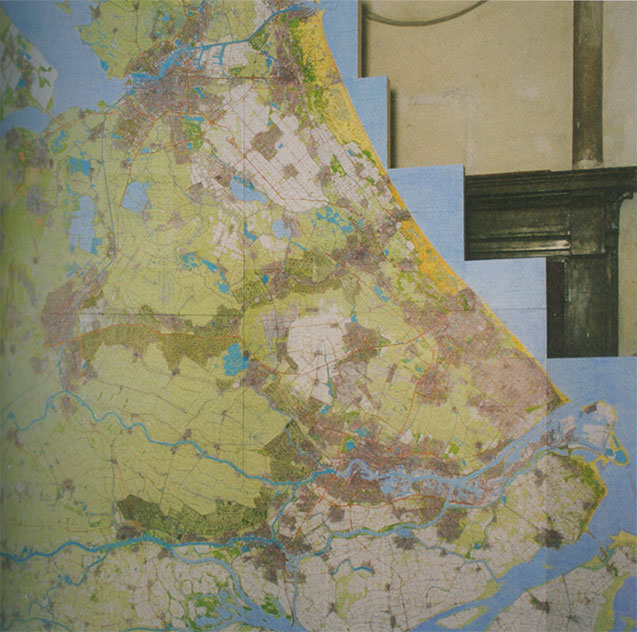
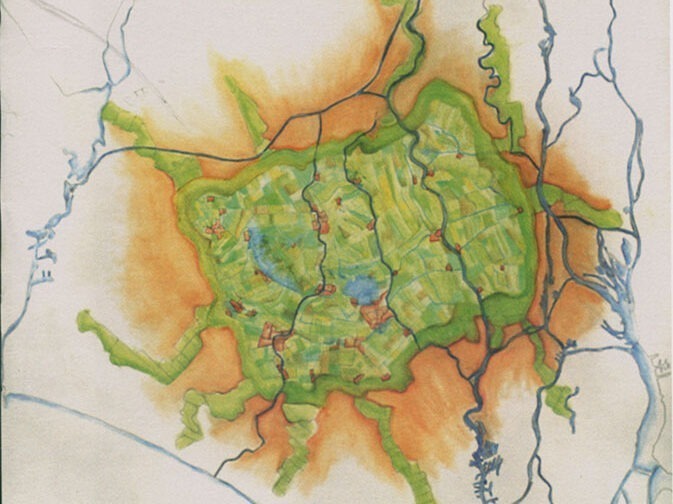


David Familian is the Artistic Director of the Beall Center for Art and Technology at University of California Irvine. He started working at the Beall in 2005 where he has curated one-person exhibitions of artists Rafael Lozano-Hemmer, Chico MacMurtrie, Jennifer and Kevin McCoy, Nam June Paik, Victoria Vesna, Christa Sommerer & Laurent Mignonneau and Lauren Woods. He has also curated group exhibitions such as: Grand Text Auto, exploring new forms of gaming and narratives; DataVIz, data visualizations made by artists across media; Play in Three Acts, a trio of interactive installations; Sight and Sound, sound art projects ranging from noise to music and three exhibitions on the history of computation and art; Drawn from a Score, Vera Molnar: Variations and Computational Poetics co-curated with Hannah B. Higgins.
Notes
[1] Horst W. J. Rittel, and Melvin M. Webber. “Dilemmas in a General Theory of Planning.” Policy Sciences 4, no. 2 (1973): 155–69. http://www.jstor.org/stable/4531523.
[2] See articles such as Esther Bloom, “Before Into the Woods Was a Disney Movie, It Was an AIDS Parable”. Talking Points Memo, January 2, 2015 and Nicholas F. Benton “Into the Woods’ is An AIDS Parable”Falls Church News-Press, January 18, 2015 both of which were written after the play debuted as a major motion picture.
[3] Interview with Bruno Latour Part I ARTE.tv, https://www.youtube.com/watch?v=sYfwkTgEpmE
[4] Ibid,.
[5] Melanie Mitchell, Complexity: A Guided Tour (Oxford University Press, 2009).
[6] Bergson Henri and F. L Pogson. 1959. Time and Free Will : An Essay on the Immediate Data of Consciousness 7Th impr ed. London: George Allen and Unwin; etc.
[7] Mitchell, Melanie. Complexity (p. iii). Oxford University Press. Kindle Edition; 2009. Page 21
[8] Hummelbrunner, Richard. “Systems Thinking and Evaluation.” Evaluation 17, no. 4 (October 2011): pp 395.
[9] Frederic Vester, “The Art of Interconnected Thinking: Ideas and Tools for a New Approach to Tackling Complexity,” Molecular and Cellular Biology, MCB-Verlag: 2012), 39
[10] Barry Richmond, “Systems Thinking: Critical Thinking Skills for the 1990s and Beyond,” System Dynamics Review 9, no. 2 (1993).
[11] For more details on the Harrison’s Green Heart of Holland project see their website, https://theharrisonstudio.net/a-vision-for-the-green-heart-of-holland
[12] Helen Mayer Harrison, Newton Harrison The Time of the Force Majeure : after 45 Years, Counterforce Is on the Horizon / Helen Mayer Harrison, Newton Harrison ; Edited by Petra Kruse and Kai Reschke. Munich: Prestel, 2016. Pp 257
[13] Mago, Vijay, and Vahid Dabbaghian. “Computational Models of Complex Systems: An Introduction.” 1-4, 2014.







